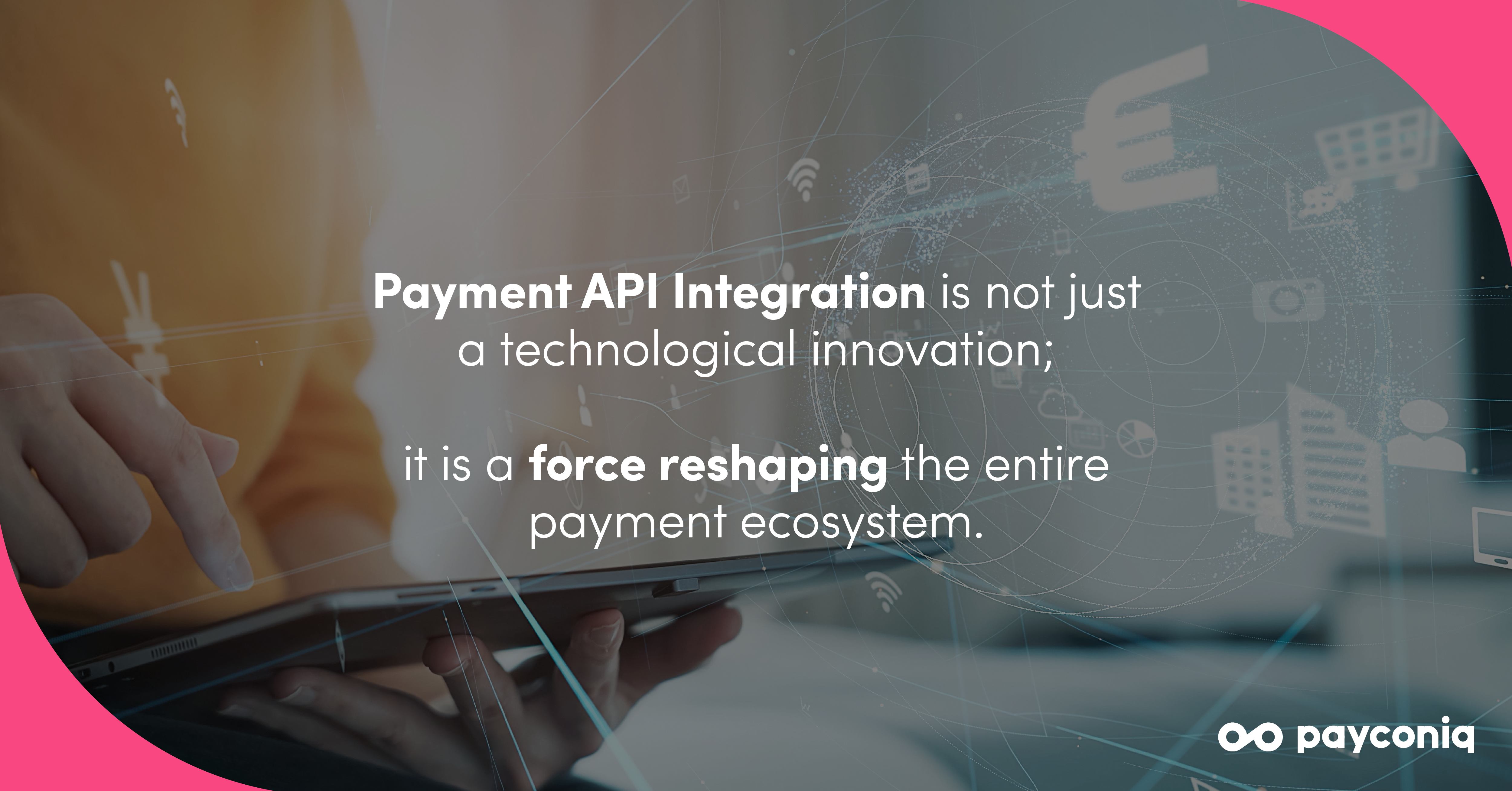The Evolution of Payment APIs: revolutionising financial technologies
In the rapidly evolving landscape of financial technologies, Payment APIs have emerged as key tools revolutionising the way we conduct business. This technological innovation acts as a cornerstone in the complex world of modern finance, reshaping the entire payment ecosystem. Understanding the evolution of Payment APIs is crucial as these play a pivotal role in streamlining financial transactions, ensuring seamless and secure transactions across diverse digital platforms, where Payconiq is one of the leaders.

APIs: bridging disparate systems for seamless integration
APIs (Application Programming Interfaces) play a crucial role in streamlining financial transactions by acting as a bridge between disparate systems. They define rules and protocols governing the interaction between software components, facilitating an efficient and standardised exchange of data. APIs are instrumental in facilitating communication between the merchant’s site, the customer’s banking system, and the payment system.
Payconiq’s APIs: Leading the way for a seamless integration
In a digital era where consumers seek faster and more secure ways to manage their finances, Payconiq has emerged as a leader. The platform facilitates both online and instore, in person transactions, linking customers’ bank accounts to the Payconiq apps and generating unique payment URLs (Uniform Resource Locator) for each merchant transaction. This approach enhances security and provides a convenient alternative to traditional cash or card transactions. Thus, Luxembourg’s financial sector, known for encouraging innovation, has provided an ideal environment for Payconiq to integrate with the country’s financial systems. With the nation’s small size and high banking density, Payconiq’s convenience benefits both customers and retailers. The platform offers API access to businesses, allowing seamless integration with existing digital systems and enabling implementation inonline, invoice and physical retail environments.
A dive into the Payconiq API features
The Payconiq APIs, organised around REST and utilising standard HTTP features, offer businesses extensive access to integrate seamlessly with their existing systems. The API employs HTTP response codes, header authentication, and HTTP verbs to ensure compatibility across programming languages. JSON bodies are used in requests and responses, with authentication through API keys, ensuring secure transactions. Companies embracing Payconiq enjoy operational integration advantages. APIs enable easy integration with existing systems, enhancing operational efficiency for accounting, sales tracking, and financial reporting. This results in accurate record-keeping and improved overall business processes. Indeed, these benefits make integration via Payment API a transformative force in the financial technology landscape, enabling businesses to adapt and thrive in the digital era.
Payment API Integration is not just a technological innovation; it is a force reshaping the entire payment ecosystem.
With platforms like Payconiq leading the way, businesses can leverage APIs to streamline operations, enhance security, and stay ahead in the competitive landscape of modern finance. As we navigate the complexities of digital commerce, understanding and embracing Payment API Integration is essential for businesses to stay agile and innovative in an ever-changing financial landscape.
Interested to integrate Payconiq within your business? Visit our Payconiq development portal here.
To know more and stay up to date with Payconiq Luxembourg news
Follow up on: LinkedIn and Twitter.
Contact Payconiq: Louise Cazzoli, Marketing Specialist, [email protected], +352 691 678 475, https://payconiq.lu.
